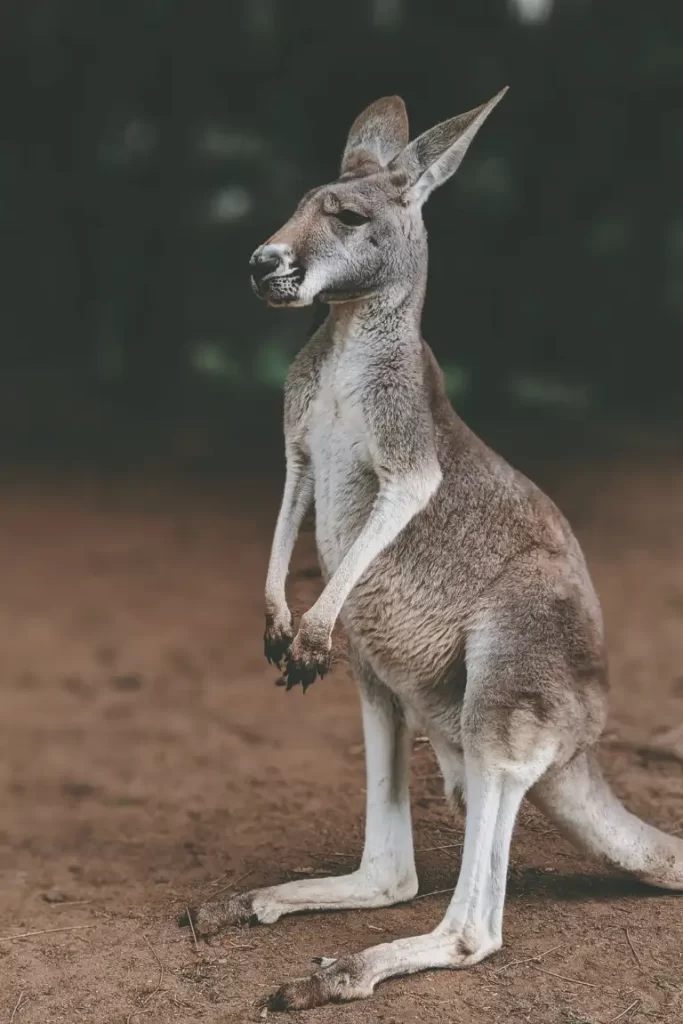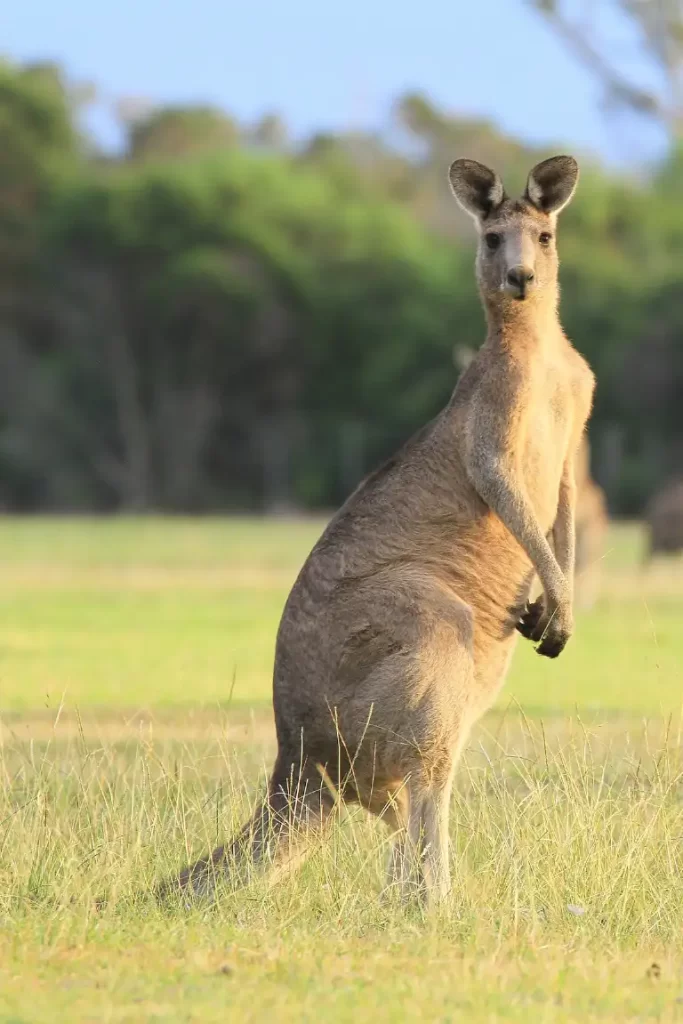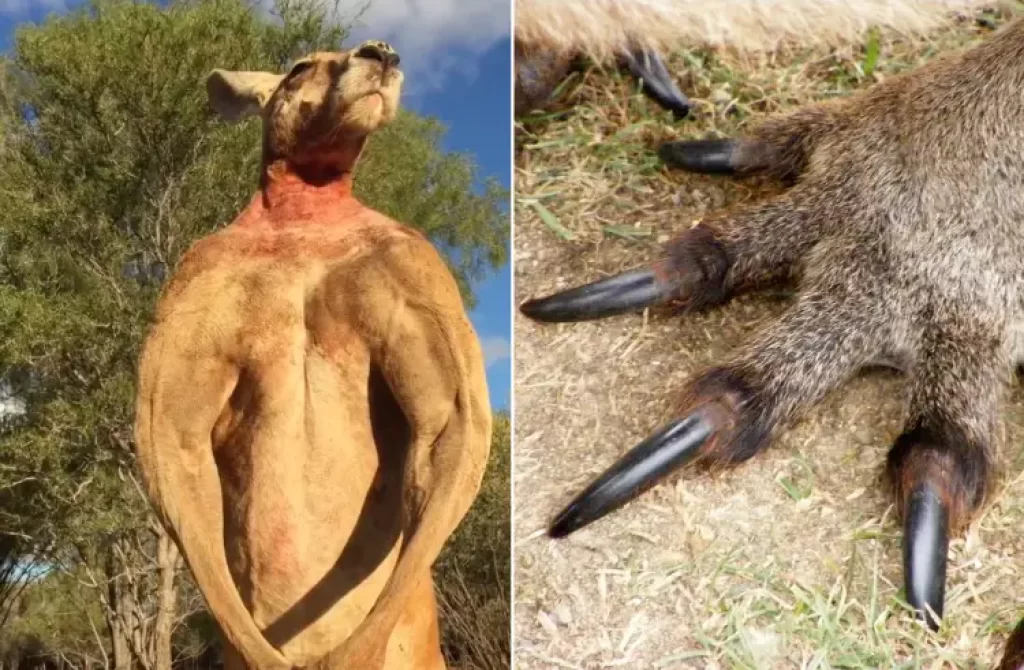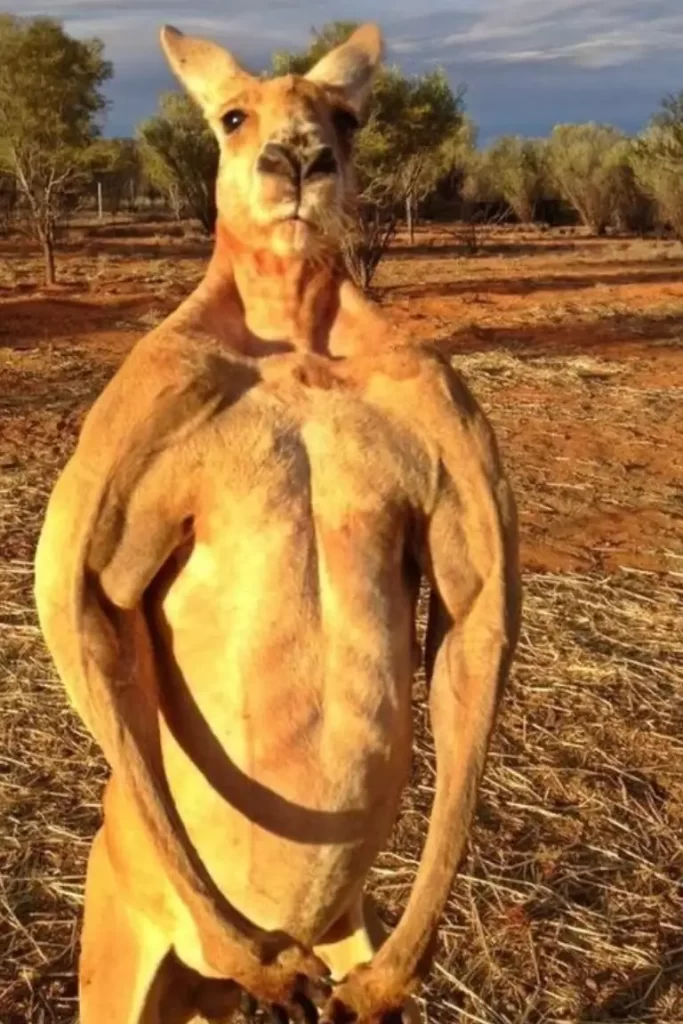Human vs Kangaroo: Who Wins the Ultimate Fight?
Kangaroos are fascinating creatures that have captured the attention of many people around the world. These marsupials are known for their powerful hind legs, which allow them to jump great distances and deliver a dangerous kick when threatened.
On the other hand, humans have opposable thumbs on their hands and rely on their back muscles for posture. In this article, we will explore the differences between humans and kangaroos in terms of physical attributes such as jumping ability, limb structure, and self-defense mechanisms.
General Comparison
If you’re curious about how humans and kangaroos compare in various aspects, we’ve put together a comparison table to shed light on their distinctive characteristics. While humans belong to the mammal category, kangaroos are marsupials with unique adaptations.
| Feature | Human | Kangaroo |
|---|---|---|
| Classification | Mammal | Marsupial |
| Size | Average height: 5-6 feet (1.5-1.8 meters) | Varies by species, with larger kangaroos standing taller |
| Weight | Average weight: 137-187 pounds (62-85 kilograms) | Varies by species, with larger kangaroos weighing more |
| Locomotion | Bipedal (walks on two legs) | Quadrupedal (hops using powerful hind legs) |
| Speed | Average running speed: 9-12 mph (14-19 km/h) | Average hopping speed: 15-25 mph (24-40 km/h) |
| Strength | Relatively strong upper body strength | Powerful hind legs for jumping and kicking |
| Adaptations | Highly developed brain and cognitive abilities | Well-adapted for hopping and surviving in arid environments |
| Diet | Omnivorous, with a wide range of food choices | Herbivorous, mainly feeding on grasses and vegetation |
| Hands and Arms | Opposable thumbs for grasping and manipulating | Short arms with clawed hands |
| Reproduction | Viviparous (gives birth to live young) | Marsupial (gives birth to underdeveloped young) |
| Lifespan | Average lifespan: 70-80 years | Varies by species, generally 6-8 years for wild kangaroos |
| Communication | Complex verbal and non-verbal communication | Vocalizations, body language, and thumping of hind legs |
| Social Behavior | Highly social with complex social structures | Social, living in groups called mobs or troops |
| Conservation Status | Not endangered | Varies by species, some are threatened or endangered |
Kangaroo’s Jumping Ability
One of the most impressive features of kangaroos is their ability to jump. They can leap up to three times their body length in one bound! This is thanks to their powerful hind legs that are much longer than their front limbs. Kangaroos use these legs like springs to propel themselves forward with incredible force.
Human’s Limb Structure
In contrast, humans have shorter legs in proportion to our bodies compared to kangaroos. Instead, we have opposable thumbs on our hands which allow us to grasp objects and manipulate tools with precision. Our front limbs are also larger than those of kangaroos since we use them for a variety of tasks such as writing or typing.
Kangaroo’s Self-Defense Mechanisms
While humans may be superior in terms of manual dexterity, kangaroos have some impressive self-defense mechanisms that make them formidable opponents if provoked.
Their tails act as a counterbalance while they hop and can even be used as a weapon against predators or humans who get too close. A kick from a kangaroo’s powerful hind legs can cause serious injury or even death.
Human vs Kangaroo Reddit
There are plenty of stories shared on social media platforms like Reddit. While some people may find these interactions amusing or exciting, it’s important to remember that kangaroos are wild animals and should be treated with respect. Approaching them too closely or trying to interact with them can be dangerous for both the human and the animal.
The strength of a kangaroo and its potential danger in a fight

Powerful Hind Legs: The Strength of a Kangaroo
Kangaroos are known for their powerful hind legs, which can deliver a kick with a force of up to 850 PSI. These legs are built to help kangaroos jump and move quickly in their natural habitat. However, this strength can also make them dangerous in a fight with humans.
The ability of kangaroos to jump up to 30 feet in one leap makes it difficult for humans to maintain a safe distance in a fight. Even if they are not kicking or using their claws, the sheer force of their jump can knock down an unsuspecting human. This is why it is important for people to be aware of their surroundings when in areas where kangaroos live.
Sharp Claws and Bite Force: Weapons of a Kangaroo
In addition to their powerful hind legs, kangaroos have sharp claws on their forelimbs that can be used as weapons in a fight. These claws are designed for digging and gripping onto surfaces but can easily cause harm if used against an attacker. Kangaroos also have a bite force of up to 925 PSI, which is strong enough to crush bones.
It is important for people to remember that while kangaroos may seem cute and cuddly from afar, they should never be approached or provoked. If cornered or threatened, they will use any means necessary to defend themselves.
Size Matters: The Weight and Height of Adult Male Kangaroos
Adult male kangaroos can weigh up to 200 pounds and stand over six feet tall, making them much larger and stronger than the average human. This size advantage allows them to easily overpower most attackers if they feel threatened or attacked.
While female kangaroos are smaller than males, they still possess the same strength and agility as their male counterparts. It is important for people to understand that regardless of gender or size, all kangaroos have the potential to be dangerous in a fight.
Real-life instances of humans fighting kangaroos

Kangaroo vs. Human: Real-life Instances of Battles
Caught on video in Australia, kangaroo vs. human battles have become a fact of life for many people. Kangaroos are known for their powerful kicks and claws, which can cause serious injury or even death to humans. In some cases, people have been injured while fighting with these wild animals.
Here’s a compilation of real battles between kangaroos and humnas:
Powerful Kicks and Claws
Kangaroos are one of the most well-known wild animal species in the world. They belong to the family of marsupials that also includes wallabies and tree-kangaroos. These animals are known for their powerful legs, forepaws, and feet that allow them to move quickly across the ground.
The kangaroo’s hind legs are especially strong and are used primarily for jumping and kicking. Their claws can be sharp enough to cut through skin and bone, making them a formidable opponent in any battle.
Real-life Instances
In one instance caught on camera, a man was seen punching a kangaroo in the face after it had grabbed his dog by its harness. The kangaroo stood still for a moment before hopping away into the bushland.
In another case, an Australian man was kicked by a kangaroo while out hunting with his friends. He suffered broken ribs and internal injuries as a result of the attack.
While these instances may seem rare, they serve as a reminder that humans should always be cautious when encountering wild animals like kangaroos.
Other Wild Animal Species
Although kangaroos may be one of the most well-known wild animal species in Australia, there are other dangerous creatures that people should avoid at all costs. Lions, dingoes, gorillas, crocodiles, snakes – all pose significant threats to humans if encountered in the wild.
You might find interesting: The Curious Tale of How the Kangaroos Got Their Name
Can humans compete with animals in a fight?

Humans vs Animals: Can We Compete in a Fight?
Humans are undoubtedly one of the most intelligent species on earth. However, teeth, and force, we fall short compared to animals.
While humans have developed tools and weapons to aid in hunting and self-defense, they still cannot match the raw strength and speed of many animals in a fight.
Lack of Natural Weapons
One of the primary reasons why humans cannot compete with animals in a fight is our lack of natural weapons. Unlike predators like cheetahs and dogs that have evolved to be highly skilled hunters with sharp claws and teeth, humans do not have such features.
Even if we try to use our hands as fists or feet for kicks, they are not powerful enough to inflict significant damage on an animal.
Moreover, some animals have unique abilities that make them unbeatable in a fight.
For instance, crocodiles can exert up to 3,000 psi (pounds per square inch) of force with their jaws – more than ten times what a human can bite with their teeth! This makes them nearly impossible for humans to defeat without any external help.
Predators vs Humans
In addition to lacking natural weapons, humans also face challenges when competing against predators like cheetahs or dogs. These animals are highly skilled hunters who rely on their speed and agility to catch prey efficiently. In contrast, humans are relatively slow runners without any special abilities that allow us to outrun these predators.
Furthermore, while we may carry weapons such as guns or knives for self-defense against predators during outdoor activities like hiking or camping trips, these items may not always be effective against an attacking animal.
A recent study by the University of Alaska Fairbanks found that bear spray was more effective at deterring bear attacks than firearms.
How strong are humans compared to kangaroos?

Kangaroos are much stronger than the average man. Their leg muscles are incredibly powerful, allowing them to jump up to 30 feet in a single bound. humans simply cannot match the raw power of these marsupials.
Raw Power: Kangaroo vs Human
A kangaroo’s leg muscles are among the most powerful in the animal kingdom. They use their legs not only for jumping but also for kicking and fighting off predators. Kangaroos have been known to easily overpower dogs and even humans in confrontations.
While humans may have superior intelligence and technology, they cannot match the raw physical strength of a kangaroo. In fact, many people underestimate just how strong these animals can be. A fully grown male red kangaroo can weigh up to 200 pounds and stand over six feet tall, with muscular legs that can deliver a kick that is capable of breaking bones or disemboweling an opponent.
Case Studies: Human vs Kangaroo
There have been several cases where humans have come face-to-face with kangaroos, often with disastrous results. One such case occurred in Australia when a jogger was attacked by a kangaroo while out for his morning run. The jogger suffered serious injuries from the animal’s powerful kicks before managing to escape.
In another instance, a man was filmed punching a kangaroo after it had his dog in its grasp. While this may seem like an act of bravery on the man’s part, it is important to note that he was lucky not to have been seriously injured by the animal’s retaliation.
You might also like: The Red Kangaroo (Macropus rufus): Australia’s Iconic Giant
The dangers of engaging in a fight with a kangaroo

Sharp claws: a formidable weapon of kangaroos
Kangaroos are known for their powerful hind legs and long tails, which they use to balance themselves while hopping.
However, what many people don’t realize is that these marsupials also possess sharp claws that can cause serious injuries. Kangaroo claws are designed to grip onto surfaces and tear through flesh, making them a formidable weapon in a fight.
Engaging with a kangaroo can be risky business
Engaging in a physical confrontation with a kangaroo can lead to deep cuts and puncture wounds. Kangaroos have been known to use their claws to disembowel their opponents, causing severe internal damage. Injuries sustained from a kangaroo attack can result in permanent scarring or disability.
Even trained professionals avoid physical confrontation with kangaroos due to the risks involved. In fact, wildlife experts recommend keeping a safe distance from these animals at all times. While it may be tempting to approach them for a closer look or photo opportunity, it’s important to remember that they are wild animals and should be treated with caution.
Injuries sustained from kangaroo attacks
If you do find yourself on the receiving end of a kangaroo attack, it’s important to seek medical attention immediately. Injuries sustained from these attacks can range from minor cuts and bruises to more serious wounds requiring surgery or even amputation.
There have been several reported cases of individuals being attacked by kangaroos while hiking or camping in Australia.
In one instance, an Australian man was left with deep lacerations across his face after attempting to take a selfie with a wild kangaroo.
Are humans a threat to kangaroos?
Human activities such as hunting, habitat destruction, and road accidents pose a significant threat to kangaroo populations.
Kangaroos are often considered pests by farmers and ranchers, leading to culling programs that further endanger their survival. Climate change also affects kangaroo habitats and food sources, exacerbating the threats they face from human activities.
Hunting
Kangaroos have been hunted for their meat, hides, and fur for centuries. While commercial hunting is now illegal in most parts of Australia, some states still allow it under strict regulations. However, illegal poaching remains a problem in many areas.
Hunting can have a devastating impact on kangaroo populations if not properly managed. In addition to reducing numbers directly through killing, it can disrupt social structures within groups and lead to imbalanced gender ratios.
Habitat Destruction
Kangaroos are adapted to living in specific environments with particular vegetation types and water sources. Human activities such as urbanization, mining, logging, and agriculture can destroy or fragment these habitats.
This loss of habitat reduces the available resources for kangaroos such as food and water sources while increasing competition with other animals for what remains. It also exposes them to greater risks from predators and traffic when moving between fragmented habitats.
Culling Programs
Farmers and ranchers often view kangaroos as pests because they compete with livestock for grazing land or cause damage to crops or fences.
Consequently, culling programs have been implemented in many areas where kangaroo populations overlap with agricultural land use. These programs typically involve shooting or trapping kangaroos en masse without regard for the long-term impacts on population viability or genetic diversity.
Climate Change
Climate change is affecting the distribution of vegetation types across Australia’s landscape which has direct consequences for the availability of food sources for herbivores like kangaroos.
As temperatures rise and rainfall patterns shift towards more extreme events like droughts or floods occur more frequently this will exacerbate the already challenging conditions that kangaroos face.
Furthermore, climate change will also lead to changes in predator-prey relationships as predators such as dingoes or foxes are able to expand their ranges into areas previously too inhospitable for them.
Who would win in a fight between a human and a kangaroo?

In a hypothetical scenario, where a human and a kangaroo were to engage in a fight, the outcome would be unpredictable. Both species possess unique strengths and weaknesses that could potentially determine the winner of such an encounter.
Humans have evolved to become highly intelligent beings with advanced cognitive abilities that allow them to strategize and plan their actions. However, humans are not as powerful as kangaroos. Kangaroos have strong hind legs that enable them to jump great distances and deliver powerful kicks that can cause serious harm.
There have been instances where humans have fought Kangaroos in real life, but these encounters were mostly accidental or provoked by the animals themselves. In most cases, humans were unable to overpower the kangaroo due to its superior strength and agility.
While it is possible for humans to compete with animals in a fight using weapons or other tools, engaging in hand-to-hand combat with a kangaroo is not recommended. The risks involved are too high, as one kick from the animal could result in serious injury or even death.
When comparing the strength of humans and kangaroos, it is evident that the latter possesses greater physical power. Kangaroos can jump up to three times their body length in one leap and deliver kicks with immense force. Humans may be able to match their intelligence against animals but when it comes down to raw physical ability, they fall short compared to many species including kangaroos.
Engaging in a fight with a kangaroo poses significant dangers for humans. While these animals may appear cute and friendly at first glance, they are wild creatures capable of causing serious harm if provoked. It is important for individuals encountering wildlife like this not approach or attempt any form of contact unless absolutely necessary.






